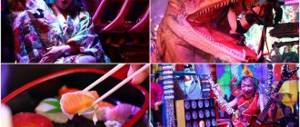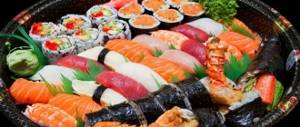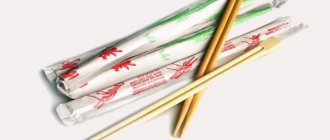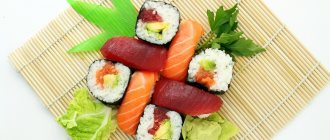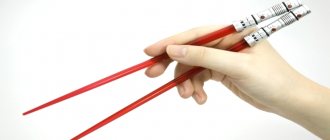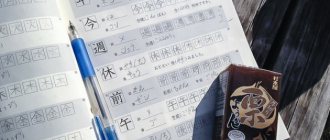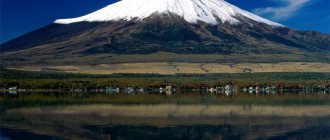Tokyo has long been recognized as the culinary capital of the world. Here you can find cuisines from all over the world and the finest restaurants. Asians are known for their special love for food, but the Japanese also pay attention to its external component. And this applies not only to the aesthetic design of dishes. The atmosphere in which you eat your food is also of great importance. Tokyo residents are some of the most sophisticated in this regard, which is why there are so many unusual cafes and restaurants here. We have prepared information for you on some of them and really hope that it will help you organize an unforgettable dinner or lunch in this amazing city.
Cafe where you can take a foot bath
The Hougurest massage spa offers an unusual type of relaxation - Footbathcafe - a café with foot baths. In fact, this is one of the health procedures of the complex. You can take a foot bath, which has a beneficial effect on blood circulation and helps the body recover, while enjoying a drink. This cafe is perfect on a hot day, after an active walking tour of the city. Moreover, it is located not far from Ueno Park.
You can reserve your spot through the website (in Japanese).
Foot bath: 30 minutes – ¥200
Drinks (non-alcoholic) from 200¥
60 minute bath plus a drink of your choice – ¥800
Name in Japanese:ほぐれすと (Hogure suto)
Address in Japanese: 東京都台東区台東4-8-5T&T御徒町ビル3F
Address in Latin: Tokyo, Taitō, Taito, 4 Chome−8−5 T&T (3rd floor)
How to get there: two minutes walk from Okachimachi Station (御徒町駅)
Opening hours: 10:30~21:30
Phone: 03-6803-2971
Website in Japanese: https://hogurest.com/cafe.html
Nuances and specifics of the case
Before developing a sushi delivery business plan, you need to thoroughly study the market and competitors. This industry is considered the least expensive in the restaurant business. However, the level of demand remains very high. To open a sushi delivery service, you don't need any special equipment. It is enough to purchase minimal equipment for the kitchen.
The main problem when organizing a sushi bar is high competition. However, customers can be attracted through high-quality products and convenient delivery conditions. To increase the number of orders, a business location is chosen in a busy part of the city.
When opening a business, the emphasis is on selling rolls. Salads, desserts and drinks are less popular; the profit from their sales is about 35%.
Cafe-planetarium
At Haneda Airport, passengers can have fun at the planetarium cafe while waiting for their flight. It is decorated according to the theme and has a hall equipped like a planetarium, in which programs are broadcast. This cafe will be interesting not only for children, but also for lovers of romance.
Shows in the planetarium run from 11:02 to 22:20 and last from 2 to 20 minutes. The schedule can be checked on the website or in the cafe itself.
Customers love the cuisine at this cafe. The presentations are mostly in Japanese, but that doesn't hurt. The cafe has many good reviews.
Prices:
Entrance to the planetarium is paid separately. Adults: ¥520, children (2 to 12 years): ¥310
Drink+dessert 850¥
Drink+hotdog+popcorn 1050¥
Pasta+salad+drink from 1250¥~
Contact Information:
Name: PLANETARIUM Starry Cafe
Address in Japanese:
Address in Latin: Tōkyō-to, Ōta-ku, Hanedakūkō
How to get there: Haneda Airport, international flight terminal, “TOKYO POP TOWN” shopping complex, 5th floor. “COOL ZONE” section.
Opening hours: 7:30~23:00
Phone: 03-6428-0694
Website in Japanese: https://www.haneda-airport.jp/inter/premises/tenant/5200100050750000/
About the emergence of izakaya
The sushi bar format existed for a long time, but it was not enough. I wanted to touch the culture of Asian drinking. Then, instead of Japanese sushi bars, Pan-Asian bars were born, where the main monoproduct was drinks, not food. The pioneers were the Moscow bars “Keanu” on Patriarshikh, Drink Your Seoul in Kalashnoye, “Bruce Lee” on “Red October”. Thanks to them, people became familiar with the culture through rice and plum wine, sake, Japanese whiskey, and Asian liqueurs. A little later they transformed into a more authentic Japanese format, perhaps due to the fact that our compatriots themselves began to travel more.
View this post on Instagram
Posted by Keanu (@keanubarmoscow) Sep 13, 2021 at 4:47 am PDT
View this post on Instagram
Posted by Bruce Lee Restaurant & Bar (@brucemoscow) Oct 7, 2017 at 5:44 am PDT
Places have appeared that are called “izakaya” in Japan - this is a small establishment with drinks and food, where locals come after work, have dinner and relax. The portions there, as well as the prices, are small, the tables are shared, the menu consists of quickly prepared dishes. I noticed that the Japanese eat sashimi, tempura first, then salad, all washed down with plenty of beer, wine or cocktails (of course, simpler and not as sophisticated as in Moscow). Then, after an hour of leisurely conversations, hot food is served - soup, fish, seafood, rice or noodles. In general, “izakaya” literally translates as “hanging out in a liquor store,” because the tradition of long gatherings came from where sake was made. Sake is a wine for the Japanese, people came to try it and communicate with each other. Gradually, tables began to be set up there and snacks were served. This is how this ancient format was born, which is still popular in Japan and which has now attracted interest all over the world. Just remember the world-famous Zuma chain, a modern version of traditional Japanese izakaya pubs.
View this post on Instagram
Posted by Zuma Restaurant (@zumalondonofficial) Aug 5, 2021 at 7:41 am PDT
Gundam Cafe
This cafe will delight all fans of the anime “Mobile Warrior Gundam”. The cafe is decorated in anime style. The site is only partially duplicated in English, but we advise you to look at the cafe menu not only to get an idea of the prices. All dishes and drinks have an interesting design. You can not only eat there, but also buy anime-themed souvenirs.
There are two such cafes in Tokyo - in the Odaiba and Akihabara areas.
Contact Information:
Name: GUNDAM Cafe
Cafe in Odaiba:
Address in Japanese:東京都江東区青海1-1-10 ダイバーシティ東京プラザ2F
Address in Latin: 1-1-10, DiverCity Tokyo Plaza 2F, Aomi, Koutou-ku, Tokyo
How to get there: 3 minutes walk from Tokyo Teleport Station, DiverCity Tokyo Plaza, 2nd floor.
Phone: 03-6457-2778
Opening hours:10:00-21:00
Cafes in the Akihabara area:
Address in Japanese:東京都千代田区神田花岡町1−1
Address in Latin: Tōkyō-to, Chiyoda-ku, Kanda Hanaokachō, 1−1
How to get there: One minute walk from Akihabara Station (JR Line). The exit from the station is Denkigai-guchi.
Opening hours:10:00 – 22:00
Website in Japanese and English: https://g-cafe.jp/
The entire meal should take ten to fifteen minutes.
In Japan they don’t eat a lot at all; usually the serving size is equal to the volume that fits in folded palms. And you can easily eat 5-6 rolls in 10 minutes. But the reason why such a rule appeared is, after all, not the Japanese habit of eating little.
When eateries began to appear on the streets en masse, whose cooks rolled rice rolls and put fresh fish on top of them, the number of food poisonings began to increase: the fish quickly spoiled. Therefore, the scheme had to be slightly revised. Japanese masters began to cut off a piece of chilled fish and place it on rice only at the time of ordering. Visitors had to eat their rolls in no more than 15 minutes, otherwise in case of poisoning they only had themselves to blame.
Cafe with ninjas
Even if you're not into ninja stories, you'll be impressed by this restaurant. And if you have always dreamed of touching the secrets of this secret clan, then a bright evening is guaranteed to you. Children will especially like the restaurant. The atmosphere, the serving of food, the interior design - everything is done in the theme of the world famous spy warriors. Before you get to the ninja-themed room, you will need to complete a quest. The restaurant has magicians who can entertain you with their performances during lunch, plus the presentation of the dishes is very elegant and unusual. The restaurant has a system of “courses” - a set of dishes from 6 items, united by theme. There is a vegetarian menu.
The restaurant is a frequent party spot, so the owners ask that guests with children plan to visit before 7 p.m.
Most visitors are delighted with the visit and claim that it is worth the money spent. Although in the reviews there are also cases when a proper reception was not provided and visitors did not like not only the dishes, but also the service, which is a rare case for Japan.
Prices:
Hot dishes from 1200¥~
"Course" from 6000¥~
Sushi, rolls from ¥600~
For companies from 8 to 25 people there is a special offer for ¥8,888 - a set of dishes (which may vary depending on the season) plus the possibility of unlimited ordering of drinks (alcoholic and non-alcoholic) for 2 hours. In this case, you spend no more than 2.5 hours in the restaurant. If you want the range to include wine, you need to pay an additional ¥1000.
Since the restaurant is very popular, we recommend that you make reservations in advance through the restaurant's website. If there are two days or less left before the desired date, it is better to call the restaurant in person. We recommend visiting the restaurant's website - most of the information is translated into English, this will help you get an idea of the menu.
There is a promotional video for the restaurant on YouTube - it will be interesting to watch, even if you are not going to Tokyo anytime soon.
Title: Ninja Akasaka
Address in Japanese: 東京都千代田区永田町 2-14-3 赤坂東急プラザ1F
Address in Latin: Tōkyō-to, Chiyoda-ku, Nagatachō, 2 −14−3 Tokyu Plaza Akasaka1F
How to get there: From Akasaka-mitsuke Station (Tokyo Metro Ginza Line or Tokyo Metro Marunouchi Line), walk three minutes to the Tokyu Plaza Akasaka shopping center. The restaurant is located on the ground floor.
Opening hours:
Monday to Saturday: 17:00-25:00(Restaurant closes at 22:30)
Sunday and public holidays:17:00-23:30(Restaurant closes at 21:45)
Phone:03-5157-3936
Website in Japanese and English: https://www.ninjaakasaka.com/
Location and rental
The territorial location when choosing a premises in your case does not affect the profit, as well as the walking distance of the stop and the frequency of traffic - after all, it is not your clients who will come to you, but you to them.. The main thing is that from here it is possible to get to remote areas of the city during the time specified in the delivery advertisement.
The recommended room area is 25-30 square meters. The point should include a preparation workshop (about 12 square meters), a utility room and a bathroom (8 and 2 square meters, respectively) and an unloading and loading area (8 square meters). The rental price varies from 15,000 to 50,000 (in ascending order from medium-sized cities to megacities and the capital).
As mentioned above, it is necessary to bring the premises into compliance with the standards required by the SES (separate sinks for dishes and hands, the presence of a hood in the production workshop, the impossibility of locating a factory building) and fire protection (availability of a fire evacuation plan and emergency exits, fire extinguishers at entrance to the room). Additional costs for this may amount to about 10,000 rubles. General renovation of the premises and the purchase of necessary furniture can cost you up to 300,000 rubles.
Cafe with robots
Although this place bears the proud name of a restaurant, we must take into account that this is, first of all, an entertainment show, and food plays the very last role here. Therefore, you will need to pay for the entrance, as for the entrance to the performance - 8000¥ (if you pay by credit card through the site, the entrance will cost 7500¥). The total duration of the theatrical performance is about one and a half hours. It consists of four shows with short breaks. The performance involves robots and characters dressed in Hi-tech style. Please note that all this is accompanied by bright lighting effects and loud music. There you can also buy a set for ¥1000 or ¥1500 (bento or sushi set with a drink).
We advise you to reserve your ticket in advance on the website (you can also pay for it there). Website in English. About an hour before the performance, you will need to go to the restaurant and exchange your reservation for a ticket. Half an hour before the start of the performance, tickets not purchased under reserve will be canceled. You can try your luck, come an hour before the show and try to buy a ticket without a reserve.
If you are just nearby, it will be interesting to look at the design of the entrance to the restaurant: there are large robots with which you can take a photo.
Visitors to the show leave rave reviews, writing that they really liked the show. But there are those for whom it was too loud and the general state of the sets and costumes left a shabby impression. But everyone agrees that the participants in the show themselves give it their all. And no one writes much about food - it is clearly not the purpose of visiting this establishment.
It's better to see once, so don't deny yourself the pleasure of watching a YouTube video about this restaurant, for example this:
Name: Robot Restaurant
Address in Japanese: B2F
Address in Latin: Tōkyō-to, Shinjuku-ku, Kabukichō, 1 −7−1 Shinjuku Robottobiru B2F
How to get there: You will definitely need a map here. The restaurant is located in a very popular area of Tokyo - Kabukicho. The area itself is not difficult to find - it is located next to Shinjuku Station, but it is extremely difficult to navigate there. There are many different types of establishments in this area and it is always very crowded. Therefore, we advise you to arm yourself in advance with a map with a building marked on it, or have access to the Internet.
Opening hours:
The performance schedule may change, so please check the website for details.
There are three performances on weekdays:
opening 17:15 (starts 17:55)
opening 19:10 (starts 19:50)
opening 21:05 (starts 21:45)
On weekends, another matinee is added. Opening 15:20 (start 16:00)
Phone: 03-3200-5500
Website: shinjuku-robot.com
Japanese fast food
Japanese fast food , by and large, consists of various variants of “donburimono” (丼物) - this is when vegetables, meat, chicken, seafood and other ingredients are put on a cup of rice, according to taste, and completely different dishes come out of it, for example , everyone's favorite cheap Gyudon, or my favorite Katsudon or the Koreans' favorite Tendon (all the Koreans in my group really loved katsudon).
Gyudon (牛丼) is a donburi made with thinly sliced beef and fried onions. The main “audience” of this dish is: “poor students”, employees and other categories of people who want to save a lot on restaurant food, because... this is very cheap food (plus or minus 280 yen - about $3).
Portia Gudon.
I’ll tell you a little about the disadvantages of this dish. The downside is that it's mostly not Japanese beef, but American beef. American meat is always much cheaper than Japanese meat and I don’t think that the price of Japanese meat is artificially raised to support the economy. Yes, of course, many can say that America is a big country and the manufacturing processes there are much cheaper because of the spacious fields and other things, but I will remain in my opinion that cattle are fattened there for no reason and that Japanese meat is many times superior to American in quality. Although I myself used Gudon at least once a day, and sometimes more.
In Yoshinoya (吉野家), gyudon was the most expensive, but now, due to some internal affairs, it has become cheaper due to the same American meat, which brought it closer to other Gyudon-ya - the average cost is 280 yen, as in Sukiya (すき家) and Matsuya (松屋).
Katsudon (カツ丼) is basically a pork cutlet with rice underneath, fried in batter. Cut evenly to make it easier to eat.
In the middle is Katsudon.
The taste is very reminiscent of McDonald's Chicken McNakens, only much tastier. It was because of the similarity of taste that I thought it was chicken. It’s very nice that katsudon can be topped with a special sauce, which enhances the taste of the dish. Personally, I like this one the most out of all the *dons.
Tendon (天丼) is tempura (various ingredients like seafood, vegetables, etc. in batter) placed on a cup of rice. Shrimp in Japan are generally very large, so 1-2 shrimp in a tendon is quite enough. In my group, this was the favorite dish among the Korean students.
In fact, there are a huge number of these dons and they are always being invented and invented. After all, you can put whatever you like on a cup of rice.
After all, you can put whatever you like on a cup of rice. Therefore, there is simply no exhaustible supply.
Therefore, there is simply no exhaustible supply.
Cafe with vampires
And for horror lovers, there is a restaurant in Tokyo. Vampire Café is not only furnished in a sinister style reminiscent of the legends of Count Dracula, but also has an original menu with dishes designed to match the theme. And vampires will serve you too. Many starters are priced at ¥666, but hot dishes start at ¥1200~
To enter the restaurant you need to pay ¥500 per person. The average bill is ¥3500
You can reserve a table in advance through the website (in Japanese) or call them. Or you can come and find out the availability of places in person. There may be free tables, or the staff will be able to book you in soon.
In general, visitors are very pleased with both the atmosphere and the cuisine. If you love horror and vampires, you will definitely like this cafe.
Name: VAMPIRE CAFÉ
Address in Japanese: 東京都中央区銀座6-7-6 ラペビル7F
Address in Latin: Tōkyō-to, Chūō-ku, Ginza, 6 −7-6 La Paix bil. 7F
How to get there: Exit Ginza metro station No. B3, walk straight for 3 minutes to the La Paix building. The cafe is located on the 7th floor.
Opening hours: 17:00–23:30
Phone: 03-3289-5360
Website in Japanese: https://www.diamond-dining.jp/shop_info/vampire/castle.html
Bento-ya (弁当屋)
Bento is food packaged in special boxes that the Japanese take with them to snack on while traveling, at school or at work.
Bento is sold everywhere: in department stores and train stations and in special establishments called Bento-ya (弁当屋) and this paragraph is about them.
When you enter bento-ya, already complete examples of bento will be displayed in front of you, which you can order at an already set price, and also, a person can make himself the bento he wants, each ingredient has its own price and you can assemble it yourself Bento, at the checkout, everything is added up and packaged. Everything is very convenient.
When preparing a bento, the Japanese themselves are very fond of not just “placing food on it,” but of decorating the bento in a variety of ways. Make octopus from sausage, etc. 
Cafe with pets
Recently, pet cafes have become very popular in Japan. It all started with cat cafes, then cafes with rabbits and hamsters appeared. Gradually, the range of animals offered began to expand and now you can already find a cafe with penguins and goats. We believe that this topic deserves special attention, so our next article will be devoted to it.
What unusual cafe in Tokyo would you like to visit? Write about it in the comments.
In order to place an order, you must be able to read hiragana, at a minimum. So fill out the form below right now and get your first Japanese lessons ↓
Problematic attitude towards Japanese sushi in Russia
Sushi appeared here relatively recently. Yes exactly. Of course, not everyone was mentally prepared to eat raw fish in various variations. This is expected and quite logical.
Those times are gone, but unfortunately, even today not everyone is able to distinguish real sushi from a cheap fake. Sometimes it becomes offensive when you hear a remark like:
… “I finally decided to try sushi and discovered that it was a rare disgusting thing. It’s good that at least I haven’t been poisoned yet”...
Therefore, I would like to make my contribution, albeit a small one, in establishing the correct image of this product and methods of presenting it.
Japanese maximalism: from sushi bars to noodle bars
Of course, we are talking about politics, not cooking. But at the end of last year, many market experts predicted the growing popularity of Japanese cuisine in many large Russian cities. And the appearance in the first half of the year of interesting projects with special offers from the Land of the Rising Sun on the menu confirms that their forecasts are coming true. We talked with the leading market player, the ResFOOD company, about whether Russia is ready to consume sushi and rolls with a new passion, whether mono-concepts, for example, rameshnye, will be successful, and what products will help take Japanese cuisine establishments to a new level.
FROM QUANTITY TO QUALITY
“Yes, we can talk about a new growth of interest in Japanese cuisine,” says Nikolai Nikolaevich Chernyshov. — But for now we are only talking about large cities. In the regions, the Japanese cuisine market is still dominated by delivery services and sushi shops with cheap, low-quality products. They seriously hinder the development of the market and neutralize the growth that is being recorded in the capital. Many delivery services operate on very low quality products, using only 2-3 main ingredients. When establishments serving Japanese cuisine began to actively open in Russia in 2005–2006, even in the most democratic cafes and restaurants, lakers, shellfish, and good salmon were on the menu. That is, there was an assortment and a normal line of sushi and rolls. Nowadays, in most establishments there is a tendency to unfairly replace high-quality products with low-grade analogues.
Magazine "Restaurant Gazette". Annual subscription But the Moscow market for Japanese establishments is changing, and this influence is already being felt in the regions. Thanks to the development of food courts, establishments with good sushi and rolls made from expensive fish began to appear. For example, in the Seiji restaurant there will be one price, but in their food court at the Danilovsky market, thanks to a lower rental rate, no additional cost for the work of waiters, etc., you will get the same high quality rolls and sushi, but at a more affordable price.
There are more and more such food courts, and you can find good quality crab and Japanese oysters for 450 rubles each. 650 rubles is a fair price for a dish with high-quality raw ingredients.
“The capital is also shaking up the periphery,” continues Chernyshov. — Many people are starting to buy better quality rice and good fish. Of course, due to economic conditions, it is difficult for regional establishments to reach the level of Moscow Japanese restaurants, but many are beginning to raise the level. And this affects the growing popularity of this gastronomic trend in general. Consumers want to get a quality product for their money. For example, in city N there are 50 outlets, and they all serve the same dishes of the same quality. And suddenly someone is the first to start “moving”, introducing oysters and scallops to the menu... A sharp influx of visitors is inevitable. In this case, other restaurateurs are simply forced to change something in order to return consumer interest in their projects...”
0.2 billion Japanese yen - revenue growth for sushi bars in Japan
120,000 Japanese cuisine establishments are open worldwide
50% growth of the Japanese catering market in Asian countries
41,000 Japanese restaurants opened in China
13% are occupied by establishments with Pan-Asian cuisine in Russia
120–150 million rubles — monthly turnover of the algae market
TAKE WIDE: PAN-ASIAN SCALE
“Now we can talk about a growing interest not only in Japanese cuisine, but also in Pan-Asian cuisine in general,” continues Nikolai Nikolaevich Chernyshov. — People began to travel a lot, many visited Thailand, Vietnam, China, got acquainted with the local cuisine and are ready for gastronomic experiments in their homeland. Therefore, many establishments try to mix the cuisines of these countries in the menu: along with sushi and rolls, introduce tom yam, dim sum, spring rolls, dishes cooked in a wok...” It turns out that Panasia is attracting interest in Japan, and that, on the contrary, is developing thanks to development of pan-Asian cuisine.
Elena Dubrovskaya also speaks about the mix of cuisines of the Pan-Asian region and their influence on global gastronomic trends. She notes that interest in Japanese cuisine in particular, and Pan-Asian cuisine in general, will inevitably lead to increased interest in Peruvian cooking. It was thanks to Japanese emigrants that the new Nikkei gastronomic trend was born in the country, and Nikkei-style sushi became one of its main dishes. And now this is a global trend that will be picked up in Russia in the coming years. Everything will depend on the availability of products and uninterrupted supplies to the regions.
“If we talk about the development of Japanese cuisine, I see the prospect of establishments that will work closer to authentic cuisine,” says Elena Dubrovskaya. — Agree that “California” and “Philadelphia” have a very indirect relation to the cuisine of Japan. In Europe, ramen shops are now in great demand - small cafe-bars with several types of noodles on the menu. This concept has serious potential on the Russian market as well.”
MONOCONCEPTS AND RENTAL EXTREMISM
Noodle shops - small establishments with an equally small menu - are another vector in the development of Japanese cuisine in Russian spaces. According to many market participants, a mono-concept can be in demand by consumers, and the first opened establishments, in which there is not always a free table, are proof of this. But there is a serious obstacle to the development of such concepts - high rental rates. “Imagine how many servings of ramen worth 350 rubles need to be sold in order to recoup the rent of a small premises, for example, in the Belorusskaya area, where the monthly rent for 50 sq.m is about 800 thousand rubles,” explains Nikolai Nikolaevich Chernyshov. — And add to the expense item the payment of bills for electricity and gas... I am sure that if the issue of rent for business owners was not so pressing, then such concepts would be successful and in demand. The consumer has an interest in them. They still work well, but it’s easier for them to survive within the same food courts.”
SURPRISE NOT WITH PRESENTATION, BUT WITH SKILL OF PERFORMANCE
New Japanese restaurants, in an attempt to break away from cheaper concepts, are experimenting not only with the combination of fillings for rolls, but also in serving methods, reviving forgotten temaki (envelope rolls) and chirashi (disassembled or “lazy” sushi). The latter, by the way, are the ancestors of bowls and poke that are fashionable today.
According to Nikolai Nikolaevich Chernyshov, rolls cut into 6 or 8 parts are a more understandable and familiar presentation for consumers, but envelope rolls, although they appeared on the menu of Japanese restaurants almost from the first day of opening, are unlikely to be able to compete for consumer's hearts and stomachs.
“It’s all about the ratio of rice to filling—temaki has much more rice,” says Chernyshov. — They are popular in Japan, since rice is the basis of the diet of the country’s inhabitants. The Russian consumer votes with rubles for other proportions - the filling should prevail over the cereal. If a California roll contains approximately 120 g of rice and 80 g of filling, that is, the ingredients are present in a ratio of 4:3, then in a temaki the ratio of rice to filling is approximately 2:1.”
Chirashi has much more prospects of winning over the Russian consumer. On the wave of growing popularity of Hawaiian poke, they can show good sales. A layer of rice is placed in a bowl, and on top of it are raw fish, shredded omelette, tofu, vegetables, shavings of nori seaweed or furikake (dry seasoning). You can cook this dish with fish, teriyaki chicken, you can combine raw and boiled vegetables in one dish... There is plenty of room for experimentation.
You can and should try new presentations, but it is much more important to choose a quality product and be able to work with it.
QUALITY STANDARDS
“Japanese cuisine is, first of all, high quality products,” says Elena Dubrovskaya. — The automated information system “Mercury”, which is being implemented by Rospotrebnadzor, is designed to clear the market of unscrupulous suppliers. So far, current quality control systems leave much to be desired. As before, many suppliers do not comply with the standards for freezing fish and seafood and violate storage standards. But with the introduction of the Mercury system, everything should change for the better, which will certainly contribute to the emergence of more restaurants and cafes with quality products.”
ResFOOD is one of the leading suppliers of professional products for Japanese cuisine. In order to supply restaurants with the best products, ResFOOD has a strict quality control system from the manufacturing plant to the receipt of products at the warehouse.
One of the most important products of Japanese cuisine is nori seaweed. The main countries supplying nori seaweed to the world market are China and Korea. Until recently, the Russian HoReCa market worked mainly with Chinese suppliers. But the quality of such a product is not always the same - from a seemingly trusted manufacturer in one batch of goods you can get nori seaweed that differs in taste and appearance. The color of the product may vary from a dense marshy to pale green, and the algae may be too thick and uneven in texture. The differences are due to the fact that algae grow at different depths in different weather conditions with different seeding densities. It is difficult for chefs to work with such seaweed: any deviations in taste are very noticeable in the roll, especially if the seaweed is old, with traces of mud. An individual approach to each incoming batch is required. 5 life hacks for working with nori seaweed
The correct color of nori seaweed is dark green, almost black. Anything lighter loses in quality. You should not trust the GOLD mark on a pack of Chinese seaweed; this category of product simply does not reach the Russian market
But the selling price of Chinese nori is almost 15–20% less than the Korean one, and it was not easy to compete with it. Everything was decided in 2021, when there was an algae harvest failure in China and the price of products from Korean and Chinese manufacturers was almost equal. This allowed the market to compare the two products and understand that the quality of Korean algae is much higher and more stable. The glossy surface, deep emerald color, sea salty taste, optimal thickness make the seaweed universal in use; in any dish it will melt in the mouth and give the desired flavor note.
Nori seaweed TM Tidori for making rolls is one of those products that ResFOOD pays special attention to. “Having thoroughly studied the market, we came to the conclusion that we would work with Korean manufacturers,” explains Elena Dubrovskaya. “Here the raw materials are better (and the cost of raw materials is about 80% of the cost of the final product, which indicates the importance of choosing the right supplier), the production of the final product is properly organized, and manufacturers are ready to produce products of a single standard.”
ResFOOD specialists, together with the manufacturing plant, select raw materials for the production of algae, which are then reserved and shipped through an internal lot system. “As stock traders, we constantly monitor the appearance of a product on the market, participate in auctions, and monitor the quantity of goods that are shipped to other markets,” continues Elena Dubrovskaya. — We, the only ones in the world, have a quality manager in Korea who monitors production - tracks the product from receipt on the line to packaging and shipment to the port. Thus, we are guaranteed to supply the kitchens of Japanese restaurants with a product of consistently high quality.”
Sushi is eaten for lunch, not dinner.
There are several reasons for this, one of them is that the Japanese prefer to eat heavy food during the day (yes, they consider rolls to be heavy food). For dinner - mostly light soups or salads. The second is that previously all the fish were brought to the market exclusively early in the morning. It could go bad in a day, as evidenced mainly by those who ate rolls in the evening.
After local residents realized the danger, they stopped taking risks and eating sushi in the evenings.

